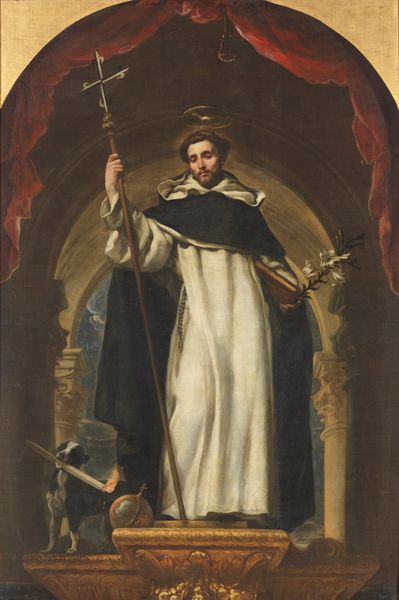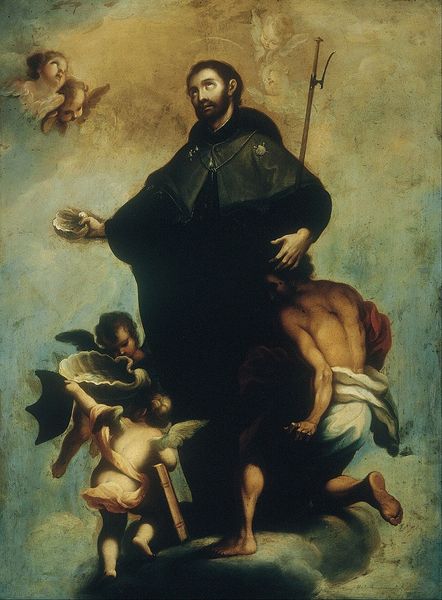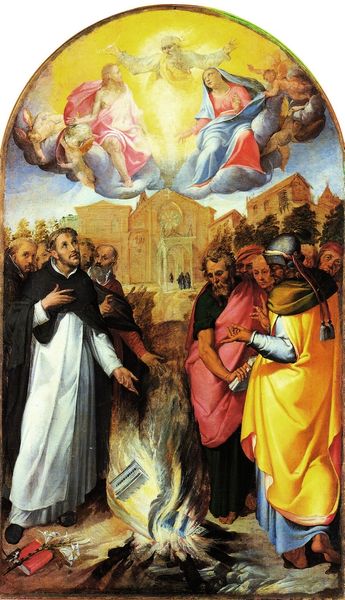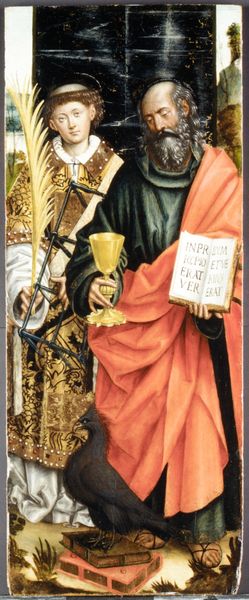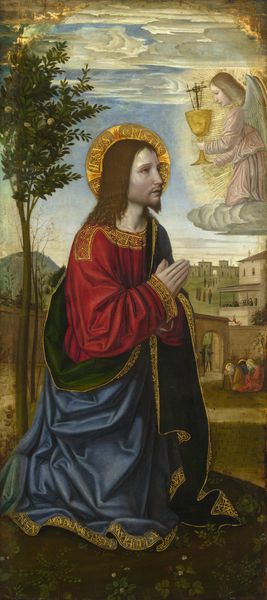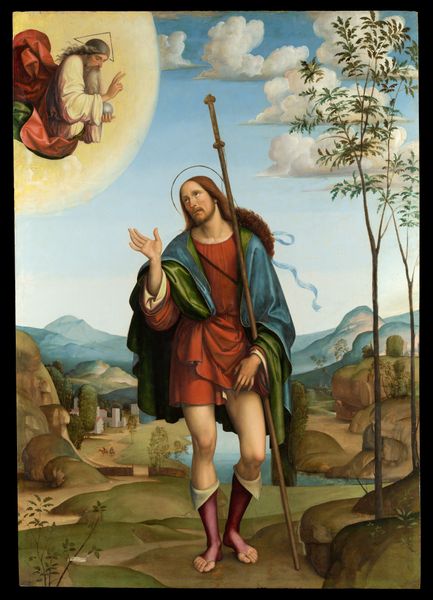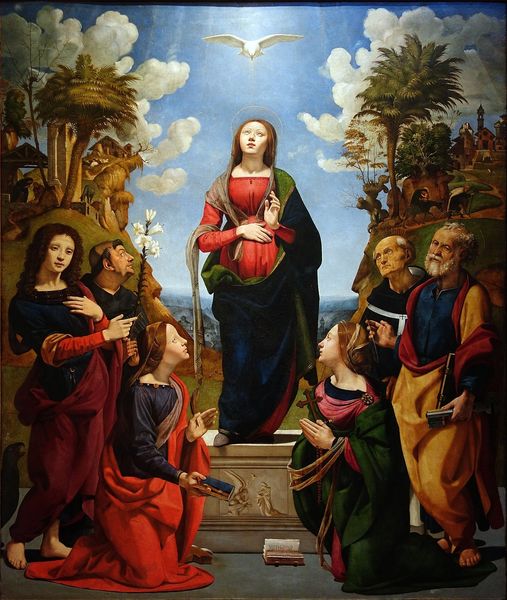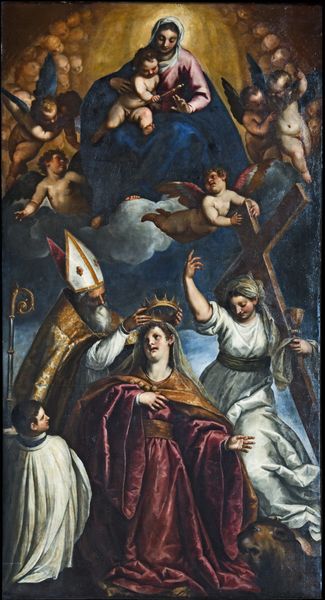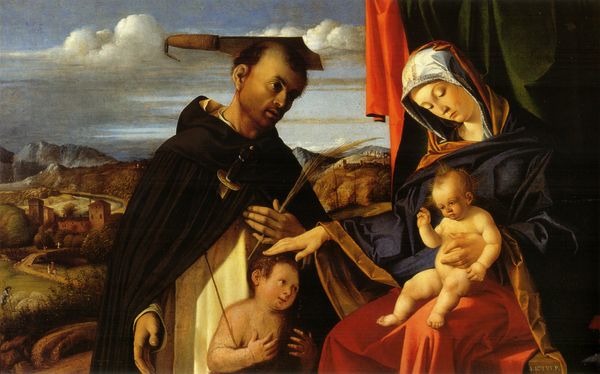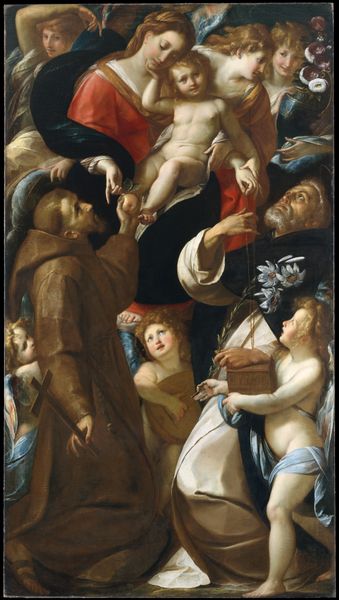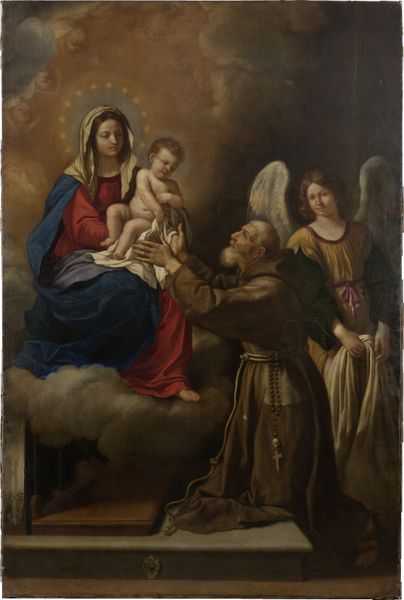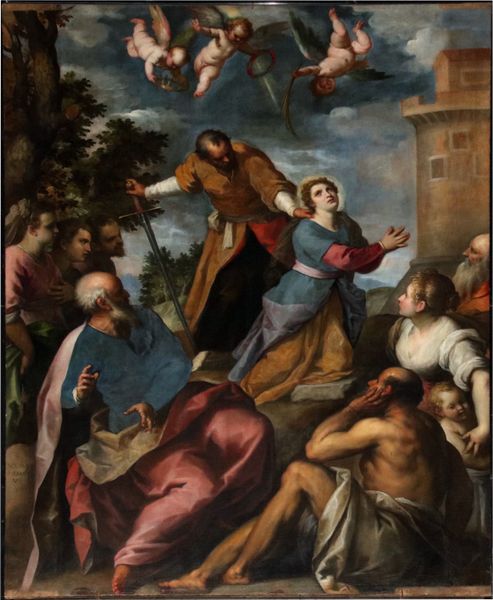
oil-paint
#
portrait
#
oil-paint
#
oil painting
#
genre-painting
#
italian-renaissance
Copyright: Public domain
Curator: Immediately, I am struck by how the artist has created a space both solemn and intimate, there is a striking softness within the forms of the composition that beckons the viewer into a feeling of veneration. Editor: Veneration, perhaps, but I'm also immediately noticing the raw quality of the oil paint, and its applications; thick impasto in some areas, almost translucent glazes in others, specifically used in layering Saint Claire’s dark, flowing habits. One wonders if such layering would serve as a tool to obfuscate a type of mourning dress of some sort? Curator: A very acute observation indeed. What we are viewing is a religious painting attributed to Palma il Giovane. Although unnamed, it depicts Saints Roch and Claire together; note Saint Roch and his pilgrim’s staff gazing up to the lantern that Saint Claire holds delicately. The work demonstrates elements prevalent during the Italian Renaissance period. Editor: Italian Renaissance, certainly. Look at the materiality! Oil paint gave artists immense flexibility. Layering translucent glazes was extremely useful to develop skin tones and drapery and was critical to creating illusions within the Italian workshops and academies. Were such skills on display like that of public works, too? Curator: Without a doubt. The placement of such religious artwork held very prominent importance; works of religious art in the public realm not only bolstered an individual’s spiritual practices, but also was vital in publicly re-establishing one’s self in their surrounding society at large. How well one displayed veneration was a very integral part of public identity! Editor: Public identity manifested materially in objects; fascinating. Consider the actual process of making oil paint itself – the grinding of pigments, mixing with linseed oil, likely involving numerous studio hands. Who had access to these types of works and why? Were they also utilized for altarpieces, frescoes, or in other smaller and larger-scale venues for the wealthy? Curator: This is all quite speculative for the period of the piece. Nevertheless, thinking about the dissemination of Italian art, consider also that the demand for the prints from Venice created an entirely new art market as well. One sees how an economy can support all areas from local venues to intercontinental distribution and further support this movement through Italian commerce in totality! Editor: Agreed, agreed. I guess seeing it with a materialist point of view reminds me that art is never detached from the economics of society. We are still very moved by this intimate yet imposing double portrait. Curator: Yes, seeing the artwork through different viewpoints enables new critical thinking; which allows each viewer to discover a more well-rounded, multifaceted perspective.
Comments
No comments
Be the first to comment and join the conversation on the ultimate creative platform.
